
A Brief History
Based in Shanghai, PGYtech has been synonymous with high quality accessories designed for the DJI line of drones. Anyone who owns a DJI drone and has looked for aftermarket accessories will have come across this brand. Although I was familiar with the name, this was my first purchase from PGYtech.
The Osmo Pocket
For those that have been following my posts, my last article was about the little Osmo Pocket handheld action camera with a built in gimbal. I have been pretty happy with this device so far. It’s a fantastic little camera. If you haven’t read my opinions yet, do check it out HERE. Suffice to say, I really like the Osmo Pocket and am looking for quality and functional accessories to complete the device.
Why use a filter?
One of the first things people learn when shooting video manually are frame rates and the correct shutter speeds recommended for the chosen frame rate. As an example, when shooting at 24fps (Frames per second), The ideal shutter speed to use would be 1/(Shutter speed x2) or 1/(24×2) = 1/48. Similarly, the ideal shutter speed when shooting at 30fps would be 1/60.
This provides an element of motion blur required for our brain to perceive the resulting video as aesthetically pleasing. When shutter speeds that are too high are used, the resulting video can be jarring, unnatural and far from the cinematic look we all desire.
These recommended shutter speeds however are actually very low for many circumstances. Even on a normal partly cloudy day outdoors, it would be difficult to use these speeds (even at ISO100) as the resulting video would be overexposed. Every camera in auto mode attempts to compensate for this brightness by increasing the shutter speed automatically (If it can’t automatically reduce the ISO any more than the base rate of ISO100)
In order to reduce the shutter speed to the ideal parameters, videographers use ND or Neutral Density filters to cut down on the amount of light introduced.
ND-PL FIlters
ND filters come in various strengths/tints. These are used to accommodate various scenarios from the brightest summer days to cloudy or overcast bright conditions.
The PGYTECH ND-PL filter set comes in ND8-PL, ND16-PL, ND32-PL and ND64-PL tints. The PL designation means that these Neutral Density filters are also polarized to cut down on glare and reflections. This is especially useful when filming in situations which could cause a lot of glare on bright days. As my main purpose for purchasing the Osmo Pocket was to use it as a Broll camera on small boats when out at sea, this suited my needs perfectly as at times the glare from the sea can be intense.
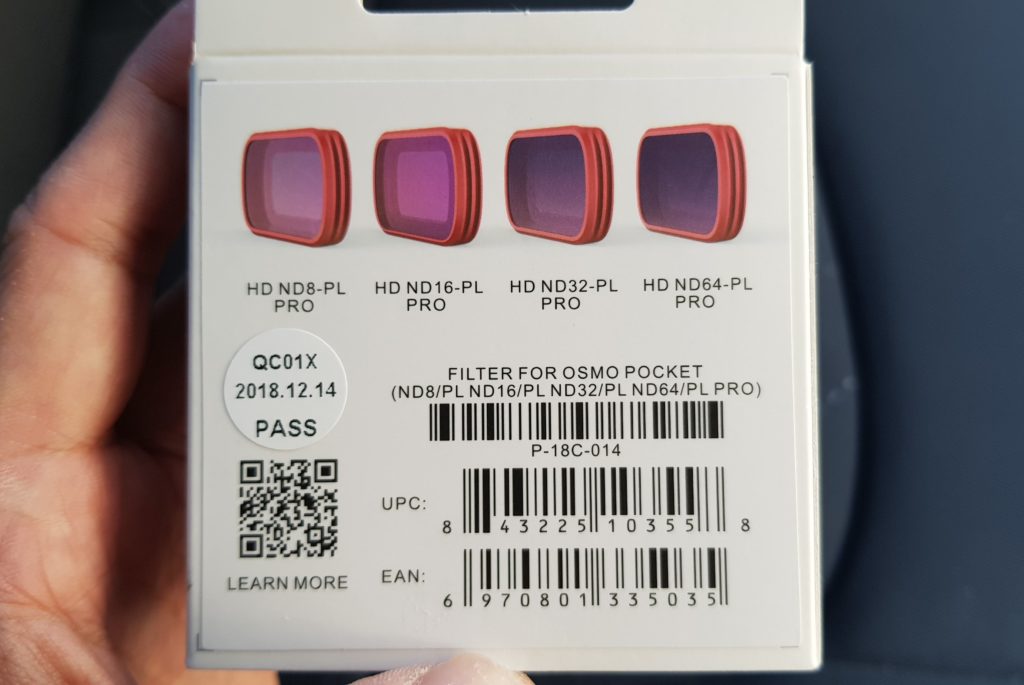
Packaging (sets, case, etc)
Filters can be a pain to carry around. They are tiny items that can scratch easily and are easily misplaced! I was pleasantly surprised when I opened the packaging to find that a well thought out container was supplied with the set.
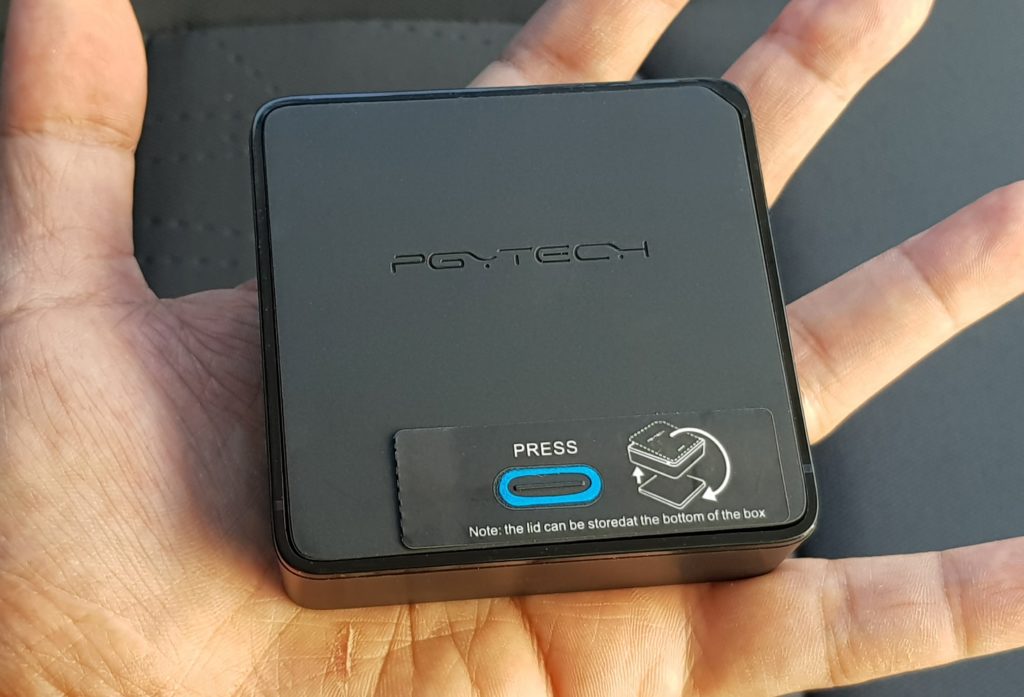
The filters come in a small black box with a sticker attached to the lid. Upon closer inspection, I realized that the lid of the box sits flush and is held in place by a magnet. The sticker highlights the point to press to open the lid. It also explains that the lid can be attached magnetically to the base of the box. Very thoughtful indeed!
The lid opens by pressing down on the side with a notch
Inside the box are 6 slots where the filter sit. Although the ND-PL filter set only comes with 4 filters, I assume the box was made this way to accommodate larger sets. It could also be additional slots for those that may purchase other filters in their range. PGYTECH also makes UV, Circular Polarized, plain ND and Graduated ND Filters for the Osmo Pocket
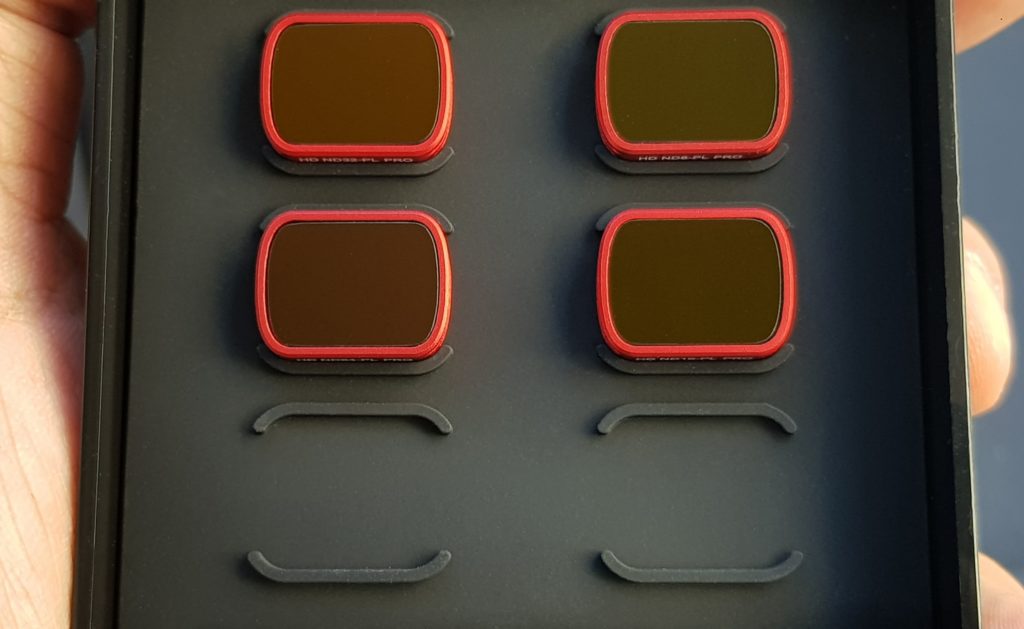
The filters are held in place magnetically and I have now arranged them in order of intensity so as to be able to quickly pick the one I need.
Fit and finish
Fit and finish are great with these filters. The frames are machined from aviation aluminum and are coated in red. I do like this color difference as I can tell instantly that I have a filter on my Osmo Pocket. The filter model number is printed in white on the side.
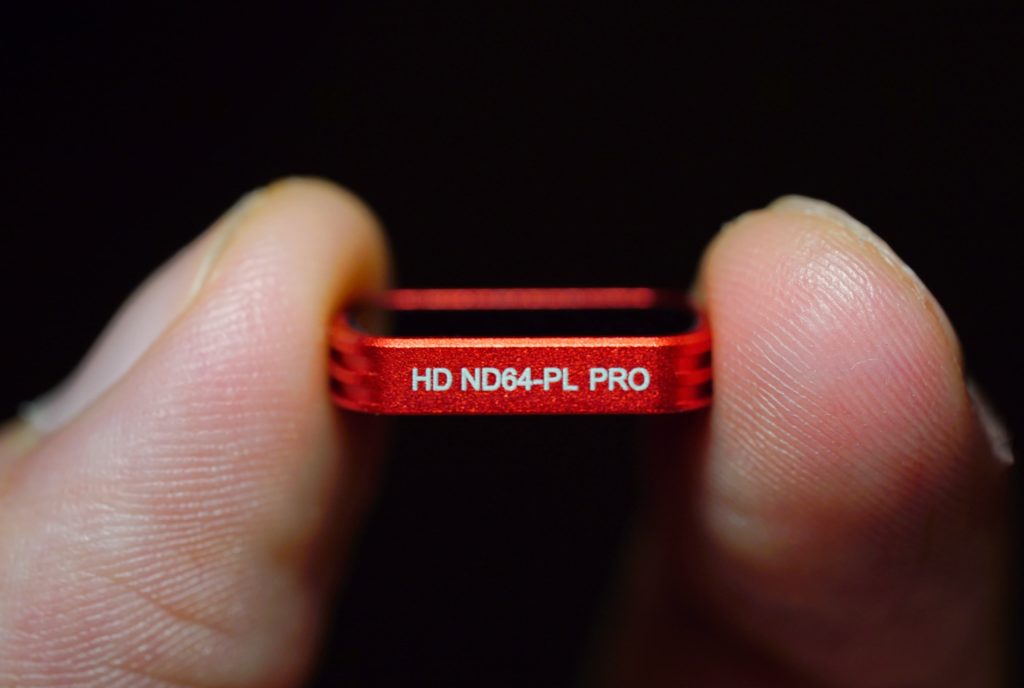
These filters attach to the Osmo Pocket via a magnet. There are no screw threads on the Pocket and the head is rectangular. I believe DJI intended for magnets to be used to attach these filters. While it does offer an extremely fast way to place the filter on and remove it, I did find that it would probably be possible to knock or brush the filters off accidentally. The front glass element of the Osmo Pocket is very slightly recessed into the frame and the filters sit within this recess for added security. However care should be taken to make sure that the filters themselves are properly seated on the camera.
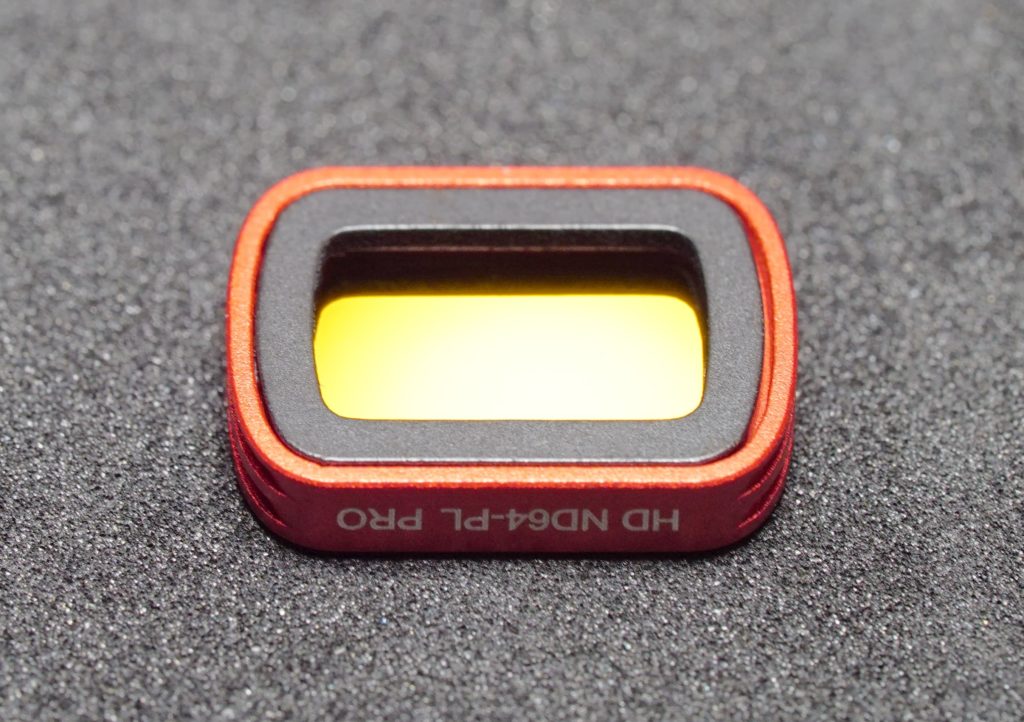
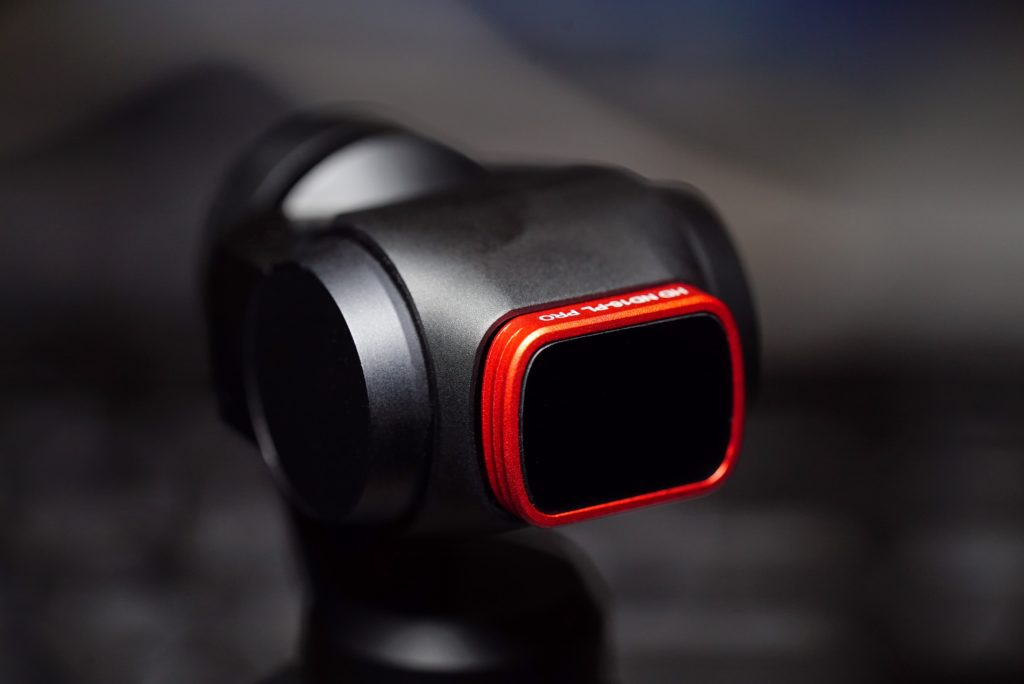
With the filter on, it is possible to still place the Osmo Pocket back into its original case. Once again, care should be taken when removing the camera from the case with the filter attached.
Long exposures
Besides using the filters to lower shutter speed to the proper levels for filming, there are other creative uses as well, such as for long exposure shots. In this case, I used the ND-PL 16 to shoot a motion time lapse of cars on the highway at night. The ND16 filter allowed me to use a shutter speed of 6 seconds which allowed me to create streaks of light as the cars drove on the highway. Without the filter, the required shutter speed and the resulting streaks would be shorter
Part of a 1 hour motionlapse taken with a 6 second shutter speed at ISO400 and the PGYTECH ND16-PL filter
Quick tip, The filters can be stacked as well for a darker tint to shoot long exposures in the day. In this case, you will need to place the filters on after the camera has been turned on and initialized. The additional thickness of the stacked filters interferes with the initialization process. The filters however are very light and will not hinder the Osmo Pocket. For those that are concerned, the Osmo Pocket will go into standby mode and the gimbal will swing freely while the screen shows a message that the gimbal is protected.
Conclusions and thoughts
Some suggestions for improving this product would be to perhaps have different shades of red for the color coating. This would allow users to quickly identify which tint is stronger. My ageing eyes struggle to read the tiny print on the frame. I have taken care to organize the filters in the correct order within the box in an L shape with ND8-PL to ND32-PL on the left column and the ND64-PL filter on the bottom right. Although this allows for quick reference, I would still prefer the added security of being able to visually see quickly that what I am picking is the right filter in the set.
The filters also did not come with a lens cloth of any kind which I thought was a strange omission given the well thought out design. I simply put in a small lens cloth of my own which I found in my dry box. When handling tiny filters such as these, it can be easy to accidentally leave a fingerprint or smudge the lens or filters. A lens cloth is mandatory.
As a conclusion, I must say that I am very happy with my purchase of these filters. They are priced reasonably, well thought out and most importantly offer good optical performance as is expected of filters. I usually shy away from purchasing cheap filters as poor manufacturing standards and materials can reflect in the footage captured reducing sharpness and causing terrible color irregularities. The PGYTECH filters offer a very good product at an extremely reasonable price point.
PGYTECH filters can be purchased from Amazon
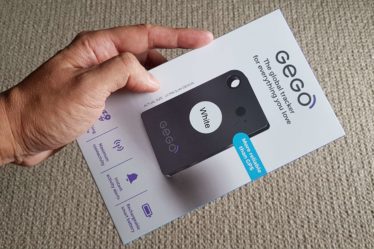

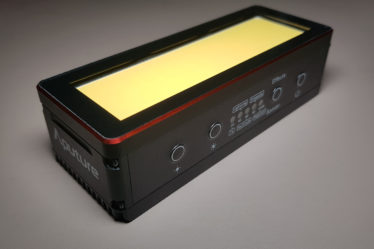
Hello there! This blog post could not be written much
better! Going through this post reminds me of my previous roommate!
He always kept preaching about this. I’ll send this information to him.
Pretty sure he’s going to have a very good read. I appreciate you
for sharing!
I use ND filters with Phantom 4 almost every time, it makes the results much better in strong day light. But, as this review https://www.firstquadcopter.com/reviews/dji-osmo-pocket-review/ says it has focus issue, and I’m afraid that the Osmo P will ND filters will produce lots of blurry videos…..
Thanks for reading the blog!
Focus pumping issues were almost completely resolved with the last firmware update. But in any case, ND filters did not play a big part for those problems. The issue then was with the fact that the OP kept shifting focus quickly from subjects near to far.
Hi David,
Sorry for the late reply. The focus issues that were mentioned in the link you shared have mostly been resolved in the latest firmware update. It’s still not perfect but it’s much better than before and usable. However, using filters will not affect focusing performance unless you are using filters in already dark situations. You should be fine with them (or any filter for that matter) Good luck and happy shooting! 🙂
Great delivery. Great arguments. Keep up the good work.
Great write-up, I¡¦m regular visitor of one¡¦s blog, maintain up the excellent operate, and It is going to be a regular visitor for a long time.
Thank you for visiting! 🙂
Howdy terrific website! Does running a blog like this require a lot of work?
I have absolutely no understanding of computer programming but I was hoping to start
my own blog in the near future. Anyways, should you have any recommendations or techniques for new blog
owners please share. I know this is off topic but I just had to ask.
Thanks a lot!
Hi there!
Thanks for visiting the blog. It does take a little effort at the beginning to get things up and running. However once you have a template setup and a regular style of writing, it gets a lot simpler although still a little tedious.
There are platforms out there that you can search for that makes blogging easy. It shouldn’t be hard to search for this. However as you develop and realize that you want more creative control, then an understanding of platforms such as WordPress which I use here is recommended 😉
I must disclose however that I have a team (and an agent) that helps with this blog. The staff are excellent and I couldn’t do what I do without them. It leaves me free to work on articles instead and still exercise creative freedom when it comes to page design!
Kay Burn
Woah! I’m really enjoying the template/theme of this blog.
It’s simple, yet effective. A lot of times it’s very hard to get that “perfect balance” between superb usability and visual
appeal. I must say you’ve done a fantastic job with this.
Additionally, the blog loads super fast for me on Internet explorer.
Exceptional Blog!
I think this is among the most important info for me.
And i’m glad reading your article. But want to
remark on some general things, The web site style is great, the articles is really great
: D. Good job, cheers
Fantastic beat ! I wish to apprentice while you amend your web
site, how could i subscribe for a blog site?
The account aided me a acceptable deal. I had
been tiny bit acquainted of this your broadcast offered bright clear concept
I appreciate, lead to I found just what I was taking
a look for. You have ended my 4 day lengthy hunt!
God Bless you man. Have a nice day. Bye
Many thanks for the kind comment and for following!
Every weekend i used to visit this web site, because i want enjoyment, as this this
website conations genuinely nice funny material too.
Thanks for sharing your thoughts. I truly appreciate
your efforts and I am waiting for your next write
ups thank you once again.